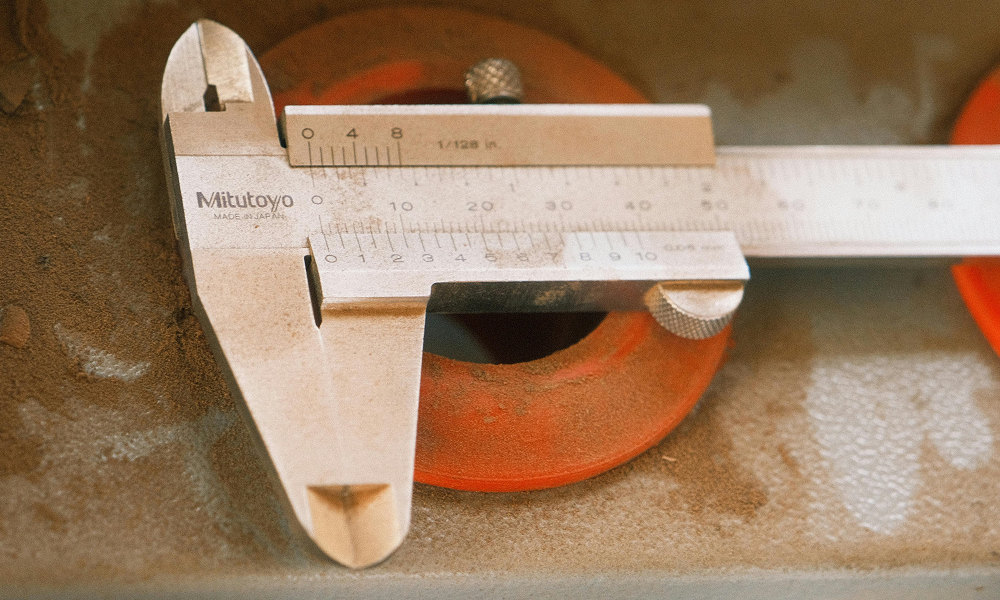Reviews
A Comparison of Handheld vs. Fixed Metrology Equipment

When it comes to measurement tasks, choosing the metrology tools is essential. Handheld and stationary alternatives each come with benefits catering to various needs across different sectors. Knowing the distinctions between these instruments can enable industries to make informed choices, resulting in enhanced productivity and precision.
The Versatility of Portable Devices
Thanks to their portability, handheld metrology equipment offers remarkable versatility. They allow users to measure objects on-site without the need for relocation, which is especially beneficial for handling large or cumbersome items that are difficult to move. Additionally, human-operated tools can access hard-to-reach areas, making them ideal for detailed inspections.
These tools commonly have capabilities that make data transfer smooth and effortless to manage tasks efficiently by enabling teams to exchange measurements with each other as needed for improved productivity and streamlined operations. Additionally, portable devices often have user interfaces that make it easier for new operators to learn how to use them, reducing downtime.
The Durability of Machinery
Accurate metrology tools are well known for their precision and reliability. Measurement accuracy is essential for precise tasks where external influences are minimised.
Fixed systems offer stability that helps prevent measurement errors caused by movement or vibration levels. These setups often have automated functions that make tasks more efficient and boost productivity. Automation also helps reduce mistakes and improve project outcomes.
Budgetary Concerns
When assessing expenses for a project or purchase decision, it’s important to consider both the immediate and long-term costs involved. Portable gadgets typically have a low or affordable cost, which may be attractive for smaller businesses or those on a tight budget. Nonetheless, it’s essential to consider the maintenance requirements and potential calibration needs.
Established systems may require an investment but usually come with long-lasting performance and strength benefits. The accuracy and automated features provided by configurations can result in cost reductions in the future. Decreased error rates and improved productivity could balance out the strain over time.
Cost Considerations
Various types of tasks call for measurement methods to be employed; handheld tools are particularly useful in situations where mobility is essential, like conducting on-site inspections or fieldwork activities. Sectors such as construction or aerospace find these instruments beneficial due to their adaptability to a range of assignments.
On the other hand, stationary machinery is ideal for tasks that require consistent measurements at a large scale. Industries such as manufacturing and automotive heavily depend on these systems for their accuracy and stability. These tools play a key role in quality assurance by upholding standards during manufacturing procedures.
Advances in Technology
Technological advancements constantly change the field of metrology. Portable gadgets frequently integrate advanced functions, such as augmented reality, to enhance both the user experience and the accuracy of measurements. These new developments allow operators to view data in real-time and improve their decision-making abilities.
Improved systems also reap the advantages of technological advancements as they become integrated with manufacturing processes for enhanced efficiency and streamlined workflow through automation and connectivity features that facilitate smooth incorporation into larger systems.
Enhancing Training and User Interaction
When choosing equipment for a task, consider how easy it is to operate and train. Handheld tools usually come with user interfaces, making it easier for users to interact with them. This simplicity helps cut down on training hours, enabling teams to master the tools. In industries where staff turnover is common, this benefit becomes particularly valuable.
Structured systems may require setups but typically include thorough training sessions so that users can grasp their nuances effectively and derive optimal outcomes from their use.
The Effects on the Environment
Lately, importance has been placed on considering the effects of choosing equipment. Having a footprint due to their portability makes handheld devices a good fit for sustainability objectives by encouraging the right use of resources.
Stable systems are known to use up resources and can streamline operations to cut down on wastage effectively. Incorporating automated functions helps promote sustainability by decreasing errors and enhancing productivity. The extended lifespan of fixed machinery further promotes eco-friendly practices by lessening the necessity for frequent upgrades.
Conclusion
Deciding between handheld and stationary metrology gear depends heavily on requirements, financial limitations, and the specific demands of the task at hand. Handheld devices provide adaptability and simplicity in operation, whereas fixed setups focus more on accuracy and consistency. By considering these aspects, industries can choose gear that matches their goals, improving efficiency and precision in measurement duties. Industries can enhance productivity through well-thought-out choices and ensure their metrology needs are adequately addressed.

-

 World5 days ago
World5 days agoCargo plane plunges into sea at Hong Kong airport; 2 killed
-

 Business1 week ago
Business1 week agoYouTube restores service after widespread global outage
-

 Legal4 days ago
Legal4 days agoMan armed with AR-15 arrested after threats to ‘shoot up’ Atlanta airport
-

 Health5 days ago
Health5 days agoMexico reports new human case of H5 bird flu
-

 World4 days ago
World4 days agoMagnitude 5.0 earthquake rattles Dominican Republic
-

 World1 week ago
World1 week agoEstonia permanently closes road through Russian territory
-

 World1 week ago
World1 week agoU.S. Special Operations helicopters spotted near Venezuela
-

 US News3 hours ago
US News3 hours agoUnwarned tornado suspected in Fort Worth as storms cause damage and power outages



